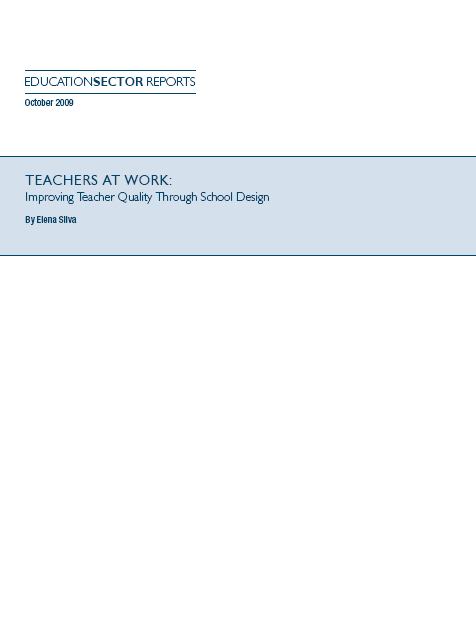Hot Topics in Education
As an extension of our research advocacy, each month NCEA gathers and shares the latest research and data from across the country on issues affecting K-12 students on the path to college and career readiness (CCR). To examine Hot Topics resources organized by NCEA focus area, use navigation keys provided to the right on this page.

The Center for American Progress released a report that looks at a small but growing number of community schools bridging the gap between the provision of antipoverty services and an excellent academic program. They capitalize on the school’s physical space and access to students and families in order to deliver much-needed services in a central, accessible location. Community schools partner with nonprofits and local agencies to provide students with health care, academic enrichment, mental and behavioral health services, and other youth development activities—without burdening school staff. Read More…

Achieving Graduation for All: A Governor's Guide to Dropout Prevention and Recovery
A new report from the National Governors Association Center for Best Practices (NGA Center) addresses the alarming rate at which students in the United States drop out of high school. It recommends actions governors should take to reduce the incidence of students not completing high school, including: promote high school graduation for all; target youth at risk of dropping out; re-engage youth who have dropped out of school; and provide rigorous, relevant options for earning a high school diploma. Read More…

America's Opportunity: Teacher Effectiveness and Equity in K–12 Classrooms
This second biennial report of the National Comprehensive Center for Teacher Quality calls on education stakeholders to create systemic approaches to recruiting, supporting, and evaluating teachers to ensure that all students have access to highly effective teachers. The report synthesizes current research on teacher effectiveness and equitable distribution of K–12 teachers in light of increasing federal policy interest in the issue. Read More…

Are New York City’s Public Schools Preparing Students for Success in College?
The Annenberg Institute for School Reform at Brown University issued this study, which outlines what a coherent and comprehensive system should offer and makes recommendations to strengthen success in college admission and completion for all the city's high school students. New York City’s public schools are graduating more students, and more of them are going on to college, but the high rates of remedial course-taking and low graduation rates indicate a need to improve academic preparation. This report addresses four key questions about college readiness and concludes with some observations about building a readiness system. Read More…

Mapping State Proficiency Standards onto NAEP Scales: 2005–2007
The National Center for Education Statistics released this report looking at the National Assessment of Educational Progress (NAEP) as a common yardstick to compare the rigor of state proficiency standards. The study shows the range of difference in state proficiency standards in reading and mathematics and whether states have changed the rigor of their standards. Academic standards became less rigorous from 2005 to 2007 in a majority of states. Read More…

Math in American High Schools: The Delusion of Rigor
This brief paper from the American Enterprise Institute looks at trends in high school math that show the disconnect between the rigor of the math education that high schools claim to be delivering and the quality of the math education that students are actually receiving as measured by assessment data. Read More…

Prioritizing the Nation’s Dropout Factories
A new brief from the Alliance for Excellent Education calls on federal policymakers to perform “legislative triage” by devoting attention to the lowest-performing high schools and immediately improving or replacing the most severely “injured” schools. The brief includes a state-by-state breakdown of dropout factories and the percentage of high schools students who attend them. Read More…

Progress and Gaps in College Preparation Policy
This brief paper from the Education Commission of the States, by Michael Kirst of Stanford University, suggests that action beyond agenda setting and policy discussions has been shallow and limited in aligning secondary and postsecondary education. The paper looks at four state policy levers that were developed by the National Center for Public Policy and Higher Education in 2005 and assesses the progress of each among the states. Read More…

Public School Graduates and Dropouts From the Common Core of Data: School Year 2006–07
The National Center for Education Statistics provides this first-look report on the number of high school graduates, the Averaged Freshman Graduation Rate (AFGR), and dropout data for grades 9 through 19 for public schools in the 2006–2007 school year. It estimates that 73.9 percent of students received a diploma. These statistics are calculated using three years of student enrollment data to estimate percent of students receiving a regular diploma within four years. AFGR is not as accurate as an on-time graduation rate calculated from actual data about a specific group of students collected over four years, or the calculation that will be required under new regulations issued by the U.S. Department of Education in October 2008. It does allow for comparisons across states and over time. Read More…

Public School Graduates and Dropouts From the Common Core of Data: School Year 2006–07
The National Center for Education Statistics released this report on high school graduation rates, reinforcing other studies that show the seriousness of the nation’s dropout crisis. The nation’s graduation rate averaged 73.9 percent. In state-by-state rankings, Nevada’s overall graduation rate was at the bottom of the scale (52%) and Vermont was at the top (88.6%). Read More…

Research Findings and Action Items to Support Effective Educational Policymaking
This publication is a synthesis of Wallace Foundation research intended to be of use to policymakers at all levels of education who are developing comprehensive approaches to achieving the Race to the Top reform objectives and other federal strategies to improve public education. Drawing from research in educational leadership, out-of-school-time learning, and arts education, the report presents evidence-based policies and practices critical to the success of educational reforms at the local, district, and state levels. Read More…

Stars By Which To Navigate: Scanning National and International Education Standards in 2009
The Thomas B. Fordham Institute released this report as an interim analysis, from a panel of experts, of the content and rigor underlying the Common Core State Standards Initiative (CCSSI) of the National Governors Association and Council of Chief State School Officers. Using the same criteria, the same experts also reviewed the reading/writing and mathematics frameworks of the National Assessment of Educational Progress (NAEP); the Trends in International Mathematics and Science Study (TIMSS); and the Programme for International Student Assessment (PISA). Read More…

This report from the Center on Education Policy examines testing data from all 50 states to determine if achievement gaps between subgroups of students are narrowing. The report also looks at the achievement trends of subgroups of students at the elementary school level. It finds that student achievement gaps for minority and low-income students have narrowed across all grade levels and subjects in 74 percent of all trend lines between 2002 and 2008. Despite this progress, achievement gaps continue to be a challenge. The report describes overall achievement trends and gap trends among African American, Latino, and Native American students and their white and Asian counterparts, and between low-income students and those who are not low income. Read More…

Staying in School Arts Education and New York City High School Graduation Rates
The Center for Arts Education looked at the relationship between school-based arts education and high school graduation rates in New York City public schools. The findings suggest that the arts play a key role in keeping students in high school and graduating on time. Analyzing data from more than 200 New York City schools over a two-year period, this report shows that schools in the top third in graduation rates offered their students the most access to arts education and the most resources that support arts education. Schools in the bottom third consistently offered the least access and fewest resources. This pattern held true for nine key indicators that convey a school’s commitment to arts education. Read More…

Succeeding with English Language Learners: Lessons from the Great City Schools
This new report from the Council of the Great City Schools finds that large urban districts that are most successful with English-language learners (ELLs) provide strong oversight from the central office for educating those students, ensure that general education teachers as well as specialists receive professional development on how to work with ELLs, and use student data in a meaningful way to improve instruction for that population. Read More…

Teachers at Work: Improving Teacher Quality Through School Design
The Education Sector released this report arguing that reforms for improving teaching quality are likely to disappoint if nothing is done to overhaul fundamentally the organization of teachers’ work. The key issues that educators must address in reshaping teachers' work include: redesigning how teachers’ time is used; combining and distributing teachers’ talent strategically; and making trade-offs to focus resources on what is most important. Read More…

The Condition of College Readiness 2009
This new ACT annual research publication takes a close look at the college readiness of the 2009 graduating students who took the ACT. This report provides a series of graphical pictures highlighting the college readiness of the ACT-tested students. It seeks to answer the question of how college ready are the ACT-tested high school graduates? It contains analysis of: student access and preparation; student academic performance; student college readiness; student educational/career aspirations and state economic development; and the policies and practices to increase college readiness. Read More…

The Evaluation of Enhanced Academic Instruction in After-School Programs
This report from MDRC presents two-year implementation and impact findings on two supplemental academic instruction approaches developed for after-school settings—one for math and one for reading. It addresses whether one-year impacts are different in the second year of program operations and whether students benefit from being offered two years of enhanced after-school academic instruction. Read More…

The Nation's Report Card: Mathematics 2009
The results of the 2009 National Assessment of Educational Progress in mathematics for fourth and eighth grades were released on October 14 and showed that mathematics scores were up since 2007 at grade 8, but unchanged at grade 4. The upward trend for eighth-graders continued with a 2-point increase from 2007 to 2009. Read More…

The Southern Regional Education Board (SREB) issued this report that calls on state leaders to take part in the solutions phase of improving student achievement in high school and beyond—by setting more ambitious statewide, district- and school-level graduation rate goals, and by making improvement a central focus of school accountability laws. Based on the work of the SREB Committee to Improve High School Graduation Rates and Achievement, the 10 principles presented in this major SREB report provide a blueprint for high school reform. Read More…
